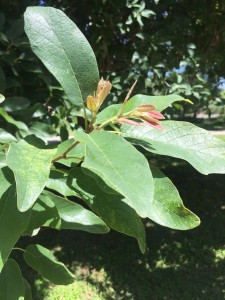This month, I focused my blog on the agriculture of Austin, in junction with the previous focus of sustainable sourcing of food. As humans continue to consume, “demand for an assurance concerning renewability of natural resources as well as pro-social and pro-environmental criteria of the resources,” leaving us in a bind with where to source our food (Czyzewski). For this month’s blog, I decided to continue the idea with seeing how local food is woven in a city, this month being Austin. During the month of April two of my four nature observations were spent at a local Austin farm in north Austin, run by a couple that would like to remain unnamed. Their main goal was to produce a food source in a subsistent manner, with an “approach-based evergreen revolution to achieve productivity in perpetuity without accompanying environmental and social harm.” (Kesavan). It is this conflict between big agriculture and local food, that spurs so much of a rift (Lohan).
big agriculture and local food, that spurs so much of a rift (Lohan).
In Austin, Texas, or at least since I have moved here, there has always been a tone of environmental consciousness a way to “create [a] “middle-way” strategies for sustainable intensification, we call for strongly transdisciplinary research systems that coordinate integrative research among major streams of agriculture via ethical and philosophical orientation provided by “purposive disciplines, ” such as applied ethics and design,” which gives us what we see today (Jordan). Every stretch of Austin, it seems that the ecology is intermeshed with city to provide and implement “non-linear feedback loops among key dimensions and actors of sustainable development”(Conto). When I asked the family why they felt so strongly about having their own garden, their response was serious, but not entirely surprising.
“In just a few years, the whole agricultural sector will have to undergo radical change. Not only that, but it is important for each and every person to know how their food is made, where it comes from, and to treat it right. Without that, we are just aimlessly consuming with out recognizing where it came from.” The husband nodded in agreement. They were correct. Why is it that I am able to just consume a large quantity of food and not think twice? That lunch I had? Could not have been there. I could not have eaten the way I do even if I was the king od England just 100 years ago. Again it is this sort of emphasis that we people need to see if we are going to have a large movement towards more green agricultural practices. To me it was just truly interesting to see how the mentalities and perceptions of local food played a role in the community. It was this sort attitude toward local agriculture that set Austin apart from El Paso.
For El Paso, it appeared that the ideaof having local food was more geared toward tradition, and culture. The foodthat is grown, has been grown for generations. The preparation of the food holds so much of culture of El Paso, that it is hard to miss the family oriented social system.
As for Austin the idea of local farming, that seemed to be predominant attitude for food to be local based on sustainability. The main goal is to find a way to have a large metropolitan area be fed, with holding many adverse side effects with regards to ecological damage. This type of food sourcing, while mainly focused on sustainability, does incorporate small elements of tradition within the process.
Not that either is better at growing or representing tradition than the other, in fact, I think both have equal amounts of both tradition and sustainability. The food grown on the small house farm was all produce that the family was familiar with preparing and growing. The familiarity with the crops where I found the cultural aspect that I had previously seen in El Paso and visa versa. The sustainable aspect of the food inEl Paso was much more apparent when I realized that it was the culture of the food, the local produce, that had a sustainable element to it all.
 Perhaps this is what I am most excited about to see in Costa Rica in the upcoming month. With the idea of sustainable agriculture, it will be exciting for me to be able to peel back the layers of the food of Costa Rica. While I am there much of my interest will be in analyzing not only the climate type, the soil type, how all of the produce is grown, but also how the country ties it all into sustainability. Being in one of the most eco-friendly areas of the world, it will be a pleasure and honor to have the chance to repeat what I had done here in Texas. I’m just pumped to be able to again find all of the inter-connected strings between the sustainability of Costa Rica and how the tradition and culture of Costa Rica is represented through these crops. Stay tuned for next month’s blog entry. Chris tackles Costa Rica.
Perhaps this is what I am most excited about to see in Costa Rica in the upcoming month. With the idea of sustainable agriculture, it will be exciting for me to be able to peel back the layers of the food of Costa Rica. While I am there much of my interest will be in analyzing not only the climate type, the soil type, how all of the produce is grown, but also how the country ties it all into sustainability. Being in one of the most eco-friendly areas of the world, it will be a pleasure and honor to have the chance to repeat what I had done here in Texas. I’m just pumped to be able to again find all of the inter-connected strings between the sustainability of Costa Rica and how the tradition and culture of Costa Rica is represented through these crops. Stay tuned for next month’s blog entry. Chris tackles Costa Rica.
Czyzewski, Bazyli, and Brelik Agnieszka. “CONSIDERATIONS ON A LAND INTRINSIC
PRODUCTIVITY AND ITS DETERMINANTS IN A SUSTAINABLE
AGRICULTURE.” ActaScientiarum Polonorum 14.3: 39-48. Print.
Kesavan, P.C. “Shaping science as the prime mover of sustainable agriculture for food and nutrition security in an era of environmental degradation and climate change.” Current Science.109.3: 488-501. Print. Jordan, Nicholas, and Adam Davis. “Middle-Way Strategies for Sustainable Intensification of Agriculture.” BioScience 65.5 (2015): 513-19. Print.
Lohan, Kumar Shiv, et al. “Farm power availability for sustainable agriculture development in Punjab state of India.” Agricultural Engineering International: CIGR Journal 17.3 (2015): 196-207. Print.
Conto, Francesco, et al. “THE AGRICULTURE’S ROLE FOR SUSTAINABLE AND INCLUSIVE DEVELOPMENT.” Management Theory & Studies for Rural Business & Infrastructure Development 36.4 (2014): 766-74. Print.